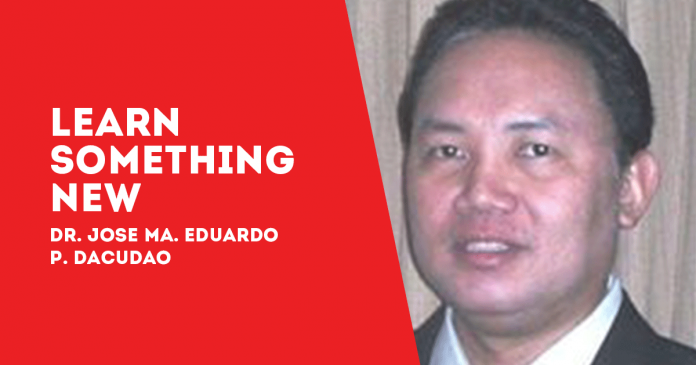
BY DR. JOSE PALU-AY DACUDAO
AT THAT time, the Philippines had never experienced such an unnatural imposition as a national language. However, probably spurred on by the European examples and that of neighboring China, copycat Filipinos in the 1930s also took up the “national language” craze of the world. The idea of one national language for all Filipinos originally was as foreign to us as baloney sandwich.
In the 1935 Constitution, the idea of One Nation, One Language became evident. The 1935 Constitution mandated the formation of a national language based on one of the Philippine languages.
A controversy surrounds this provision. The records of the 1935 Constitutional Convention showed that the delegates eventually approved a national language based on all the Philippine languages.
The draft went to the style committee, but after alleged manipulation by Tagalistas, the final draft showed a provision that mandated a national language based on one of the Philippine languages.
Subsequent Philippine Constitutions in 1973 and 1987 mandate a national language based on all Philippine languages. The idea of respecting the unique identity of each Philippine language is implied.
Unfortunately it is simply linguistically impossible to amalgamate several languages into one baloney of a national language, without losing the uniqueness of each component language. This provision is technically impossible to implement.
Instead, what has happened is that a single dialect based on one of the Philippine languages, the Tagalog language of the colonial center Manila, was undemocratically imposed in World War II by the Japanese puppet government.
English, a socially neutral leveling tongue in use all over the Philippines, with the added bonus of being the international language of commerce and science, was banned, inasmuch as it was the language of the American enemy.
In 1942, Executive Order 44 issued by collaborationist President Jose P. Laurel ordered the integration of Tagalog into the core subjects of the University of the Philippines.
In short order, Tagalog became a permanent course in all Philippine schools, and a symbol of anti-Americanism. The Japanese subsidized the creation of Tagalog literature.
Whereas during the American period Philippine literature consisted of almost equal parts of Cebuano, Tagalog, and Ilonggo writings, plus a smaller but substantial quantity of Ilocano, Kapampangan, Pangasinense, and other non-Tagalog works, Philippine literature during World War II and its aftermath consisted of practically pure mono-cultural monolithic Tagalog.
Tagalistas almost always pride themselves as anti-imperialist. The irony of it is that the imposition of Tagalog (honey-coated as Filipino) was done as a colonial weapon of the Empire of Japan in World War II. It continues to be imposed on the Philippines as an instrument of the internal colonialism of the Empire of Manila.
Moreover, since World War II, the percentage population of the non-Tagalog peoples of the Philippines has been decreasing rapidly. On a daily basis, non-Tagalog citizens of the Philippines have been transformed to second class citizens, social minorities whose languages and ethnic identities have been marginalized.
In stark contrast, many nations of the world have begun to abandon the One Nation, One Language policy since World War II by adopting the Multiple Official Languages model.
The imposition of a single language on all peoples of a country is increasingly being seen as a harmful vestige of Jacobin ultra-nationalistic 19th century France, which was in the habit of beheading its non-conforming citizens by the thousands.
Unity in Uniformity or Unity in Diversity?
One nation, One language or Multiple Official Languages?
Choose your pick./PN



